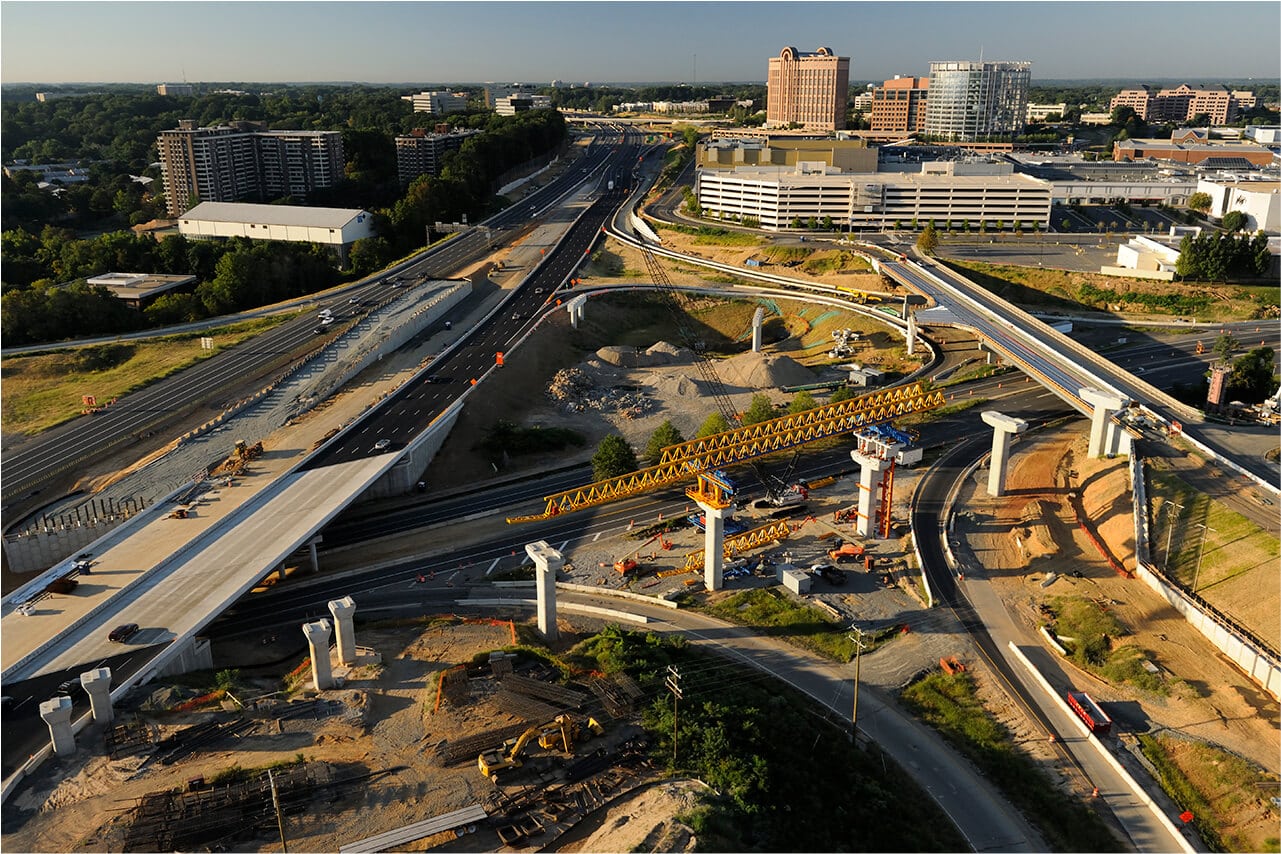- May 8, 2020
- COVID-19, Perspectives
Mitigating Risk in Uncertain Times: Ways to Keep Your Transit Program on Track


Emily Grenzke, MIAM
Transit Asset Management Specialist
Identifying and mitigating risk is a key component of delivering any major public infrastructure program. With the global COVID-19 pandemic, and the unpredictability that has accompanied it, managing uncertainty through risk assessment has become even more vital.
Kimley-Horn’s Paul Elman, PE, a seasoned transit and rail engineer who has helped deliver a variety of major transit projects, including the Washington Metrorail Silver Line extension, met (virtually) with Emily Grenzke, MIAM, a national leader in infrastructure asset management and former Manager for Risk, Compliance, and Sustainability at the largest freight railroad in Australia (Aurizon), to discuss how to best deal with risk during a time of rapid change.
An Interview with Emily Grenzke
Paul Elman (PE): Particularly now, anyone looking to implement an infrastructure program has many variables they need to examine to evaluate the most effective use of precious funding and resources. Are there best practices in developing a risk management program to facilitate these decisions?
Emily Grenzke (EG): When there is a lot of uncertainty about funding and service needs, a risk-based approach to prioritization can help visualize and define trade-offs. The thing to avoid is adopting a purely “worst first” approach that only prioritizes renewing the assets that are oldest or in the poorest condition. While this is important for limiting the risk of service disruptions, it can be short-sighted to ignore capacity issues. Risk-based prioritization should incorporate the probability of asset failures, their criticality to service, and the impact to customers of not addressing capacity (in terms of revenue lost or decreased levels of service).
For expansion programs, it also helps to think through Expected Opportunity Lost (EOL) when weighing different investments. EOL is an approach that uses the probability of each possible future to weigh the cost of making the wrong investment choice. It can be overly technical at times, but the methodology is valuable to follow for thinking through trade-offs and likely outcomes.
The thing to avoid is adopting a purely “worst first” approach that only prioritizes renewing the assets that are oldest or in the poorest condition.
Emily Grenzke, MIAM Tweet
PE: What kind of management information or tools would be useful for evaluating risk and decision making in changing economic conditions?
EG: First and foremost, it’s important to have good business processes in place to support decision-makers. If you don’t have that, then even the best information won’t help you much! That being said, it is hard to get good information on probable futures in our current environment. Things are changing very rapidly, but there are approaches you can use to incorporate risk into any model of the future. If you are doing funding projections, as an example, you should be using sensitivity analysis that allows for different variables to have a range of possible futures, such as tax revenues or inflation rates. If many factors are uncertain, including future costs and schedule, I also like to use Monte Carlo simulation. Monte Carlo allows you to enter a range and distribution for any variable you are using in future plans to calculate the most likely outcome. Thinking through the possible scenarios and their probabilities is helpful to keep people focused and avoid paralysis due to uncertainty.
PE: How are risk management programs used to assess whether budgets are enough to fund the implementation of capital programs and projects?
EG: We work in infrastructure, Paul! Budgets are never sufficient to fund capital programs (or rarely are, anyway). So, most infrastructure organizations have developed some form of triage for their capital programs based on the criticality of needs and readiness of projects. Once projects are rolling, it also is important to control the costs, so the budget goes as far as possible. Many agencies build in cost contingency to address this risk. More agencies are using incentives in their contracts to minimize costs. The most mature agencies also are actively utilizing risk registers and mitigation plans. A risk register identifies the risks to cost and schedule, prioritizes those risks, identifies who is accountable for mitigation measures, assigns milestones, and assesses the residual risk to determine if further mitigations are needed. For a large program, the risks from individual projects should be aggregated to determine which are large enough or have dependencies that will impact the entire program. Many people view risk registers as a “check the box” activity that tends to be neglected, but these can be very effective if utilized regularly as a management tool.
The key issues to keep a close eye on are interest rates, cost inflation, funding or revenue projections, and growth (or lack thereof) in demand.
Emily Grenzke, MIAM
PE: Once a risk management program is developed, is it useful to revisit any of the inputs, assumptions, or components later on?
EG: Of course! Risk is the outcome of uncertainty, and our operating environment changes frequently. Normally, I would say a risk register or capital program forecast should be updated quarterly. But right now, it would be best to reconsider variables about monthly until things calm down a bit. The key issues to keep a close eye on are interest rates, cost inflation, funding or revenue projections, and growth (or lack thereof) in demand. Some of the fluctuations we are seeing will be short-lived and may not require a rethinking of current plans; however, risk must incorporate the probability of different futures—so you can at least have a plan for the “what if.”
About the Expert

Emily Grenzke, MIAM
Emily is a project manager and analyst with consulting and research experience across several domains, including a focus during the past 14 years on public transportation. She also managed the introduction and implementation of a risk management framework, strategic and business planning processes, sustainability strategy, and environmental management system for the largest freight railway in Australia.
